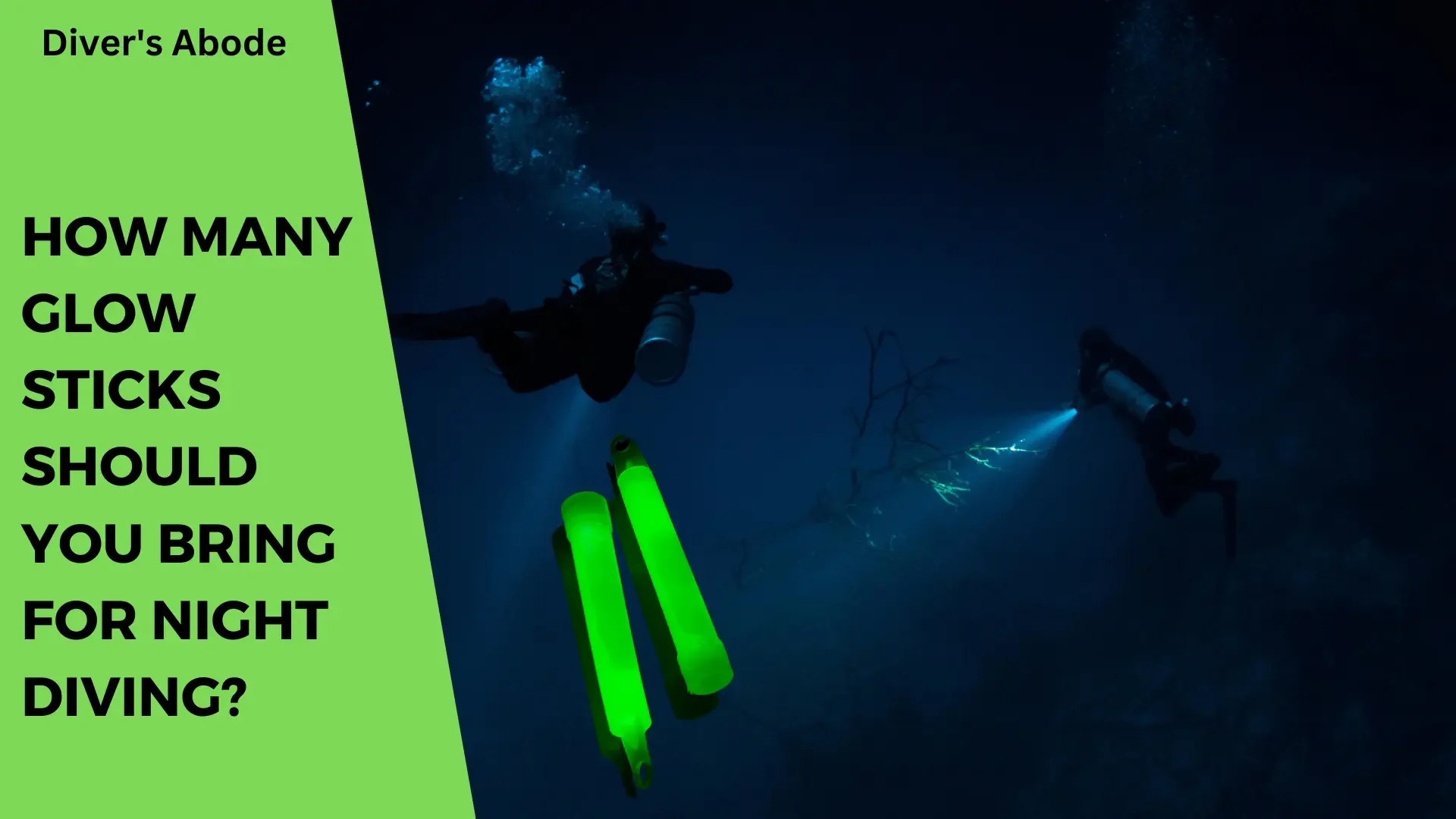Night diving is the new hype among thrill seekers in the diving community. Picture it! The peace and quiet, soft movements of the water and marine life swimming around; it’s a whole new world! It’s no surprise that many people want to experience the thrill that night diving has to offer.
However, this doesn’t mean there aren’t any complications. The lack of visibility is probably the top concern for divers. Fortunately, there’s a quick fix for this: glow sticks. Glow sticks emit a soft light that helps divers navigate the dark waters and communicate with one another. They are also often used as tank markers.
Every choice comes with its fair share of commonly asked questions. How many glow sticks are too many? Do they attract fish? Do glow sticks disrupt marine ecosystems? I am here to answer all your burning questions in this post.
Table of Contents
How Many Glow Sticks Should You Bring for Night Diving?
The number of glow sticks you bring for your night dive will differ depending on your personal preferences, as well as the dive conditions, timeframe, safety, and visibility.

As a general rule of thumb, you should bring between two to four sticks. This will give you a primary light source, and you’ll have a few backups in case of an emergency. It’s best to be safe rather than sorry and bring a few extras, especially if you’re diving into unfamiliar territory.
Do Glow Sticks Attract Fish at Night?
Yes, glow sticks often mimic bioluminescent organisms, which many fish are naturally drawn to. When you have glow sticks with you underwater, you can expect a fair amount of squirrelfish and soldierfish activity around you while wandering the coral reefs.
However, this will differ depending on the location and species of fish. Therefore, even though they’re a valuable tool, you shouldn’t rely on them solely, as certain types of fish may not be fazed.
Are Glow Sticks Harmful to Marine Ecosystems?
If you use glow sticks responsibly, you shouldn’t worry about harming the marine ecosystem. However, the outer casings are generally made out of plastic, which raises a few concerns about the environmental impact of glow sticks.
In my opinion, glowsticks are always a better choice compared to high-lumen night dive torches that are known for causing distress to nocturnal marine creatures.
Most of the time, glow sticks are only used for short time periods, which minimizes the environmental impact. As long as you’re disposing of the sticks properly and not leaving them in the water, you shouldn’t be worried.
What Colored Glow Sticks Are the Most Efficient?
Studies have shown any light having a short wavelength works best underwater without reducing visibility or causing distress to marine life.
If nocturnal marine life observation is your primary goal of night diving choosing green or blue-colored glow sticks would be the perfect solution for you.
With sufficient glow sticks, you’ll be able to enhance visibility during night diving and make the most out of your experience. They are extremely handy for navigating your way and attracting specific species, and they have a minimal impact on the environment when used appropriately. Therefore, you can easily explore the underwater world, even during the darkest hours, when using a glow stick properly.
